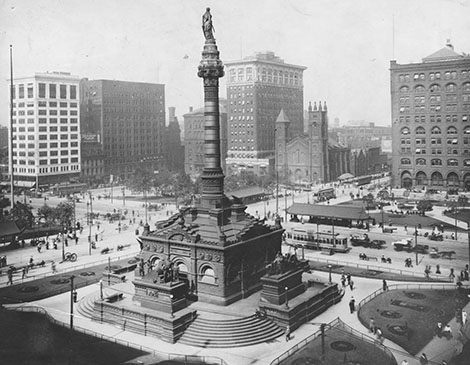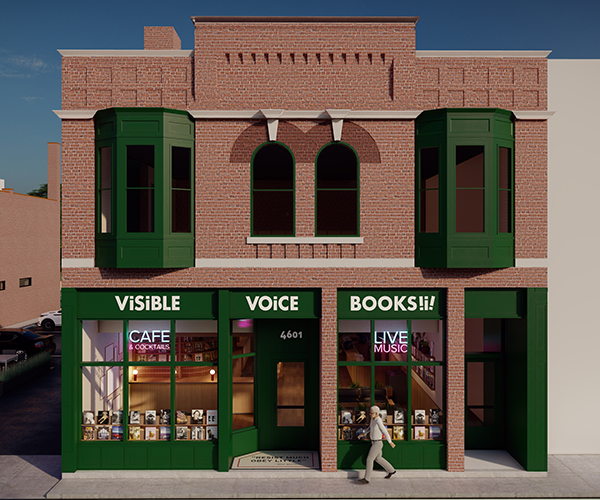It became a recurring scene for Levi Scofield. After being selected as the sculptor for the Soldiers’ and Sailors’ Monument, he would head to Public Square and begin construction, only to be arrested.
This happened four times. The problem was some public officials didn’t agree with the monument’s location. They worried it would disrupt traffic and nearby businesses. So each time Scofield started to work, they sent police to shut him down.
But thanks to massive public support, including a tax approved by city residents solely to raise the $280,000 needed to pay for the monument to the city’s Civil War veterans, Scofield prevailed, clearing the way for him to create one of the city’s most intricate and intriguing memorials.
1. The shirtless sailor preparing for a mortar bombardment in the battle for Island No. 10 in the Mississippi River is African-American. “The Navy was always a haven for runaway black slaves,” explains Neil Evans, president of the Cuyahoga County Soliders’ and Sailors’ Monument Commission. Scofield’s depiction is significant because his Soldiers’ and Sailors’ Monument is one of the earliest Civil War memorials to depict black and white men fighting alongside each other.2. A statue of Lady Liberty stands high atop the monument, cloaked in Union garb. She wields a sword in her right hand and a shield with the word “liberty” across it in her left. Scofield modeled the figure after his wife, Elizabeth.3. A little circular marker on the northwest corner of the memorial has nothing to do with the Civil War and everything to do with the monument’s location. It is the spot from which all mileage to Cleveland is measured. Identified by a tiny triangle surrounding a plus sign, the marker also indicates that the monument is located 668 feet above sea level. This is the only such marker in downtown.4. The Civil War marked the first time in American history that female nurses tended to wounded soldiers. Scofield wanted to show how instrumental they were to the war effort by including a sculpture of the Sanitation Commission within the monument. “Women are given a position of prominence,” Evans says. “It’s the first thing you see when you walk in.” Depicted among the women shown in the sculpture is Lucy Webb Hayes, the wife of Ohio-born president Rutherford B. Hayes.5. Though Scofield’s inclusion of a black solider was unique for the time, the depiction of African-Americans inside the monument was even more controversial, given the rampant racial intolerance and segregation present throughout the country in 1894. In a bronze relief depicting the emancipation of slaves, Abraham Lincoln is shown lifting the shackles from a black man kneeling before him. “Now here’s the part that’s really extreme,” Evans says. “He is giving him a Springfield musket rifle with a full cartridge box so he can defend and fight for himself.”




